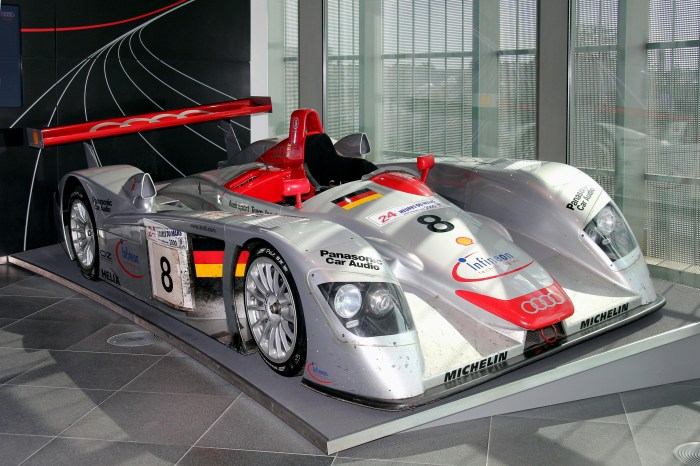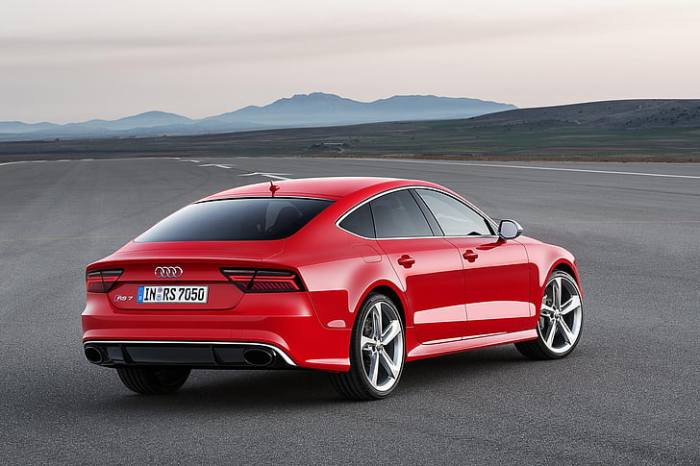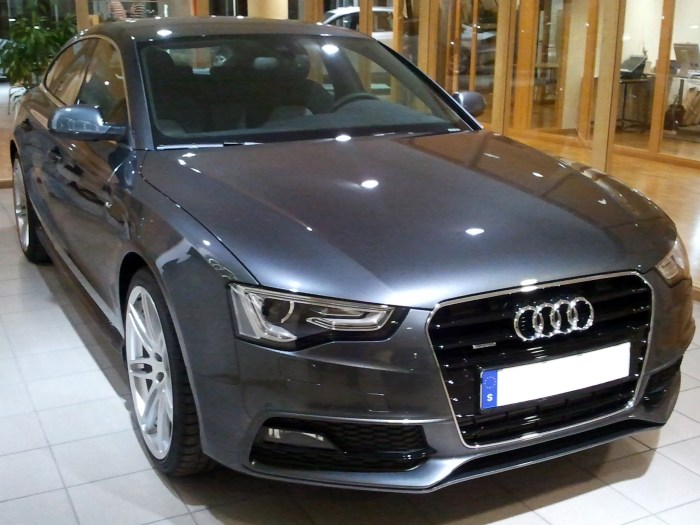Audi vs BMW vs Mercedes sets the stage for an exhilarating comparison of three automotive giants that have defined luxury and performance for decades. Each brand boasts a rich history, a robust global presence, and a unique set of core values that resonate with drivers around the world. As we dive deeper into their vehicle lineups, performance metrics, and innovative features, we will uncover what truly sets these brands apart in the competitive landscape of luxury automobiles.
From the sleek sedans of Audi to the powerful sports cars of BMW and the sophisticated SUVs of Mercedes, this exploration will provide insights into their respective philosophies and the driving experiences they offer. Whether you prioritize performance, comfort, safety, or resale value, this comparison will guide you through the intricacies of choosing the right brand that aligns with your lifestyle and preferences.
Overview of Audi, BMW, and Mercedes: Audi Vs BMW Vs Mercedes
Audi, BMW, and Mercedes-Benz are three iconic automotive brands that have shaped the luxury car market for decades. Audi, founded in 1909, is known for its innovation and technology, particularly in all-wheel drive systems. BMW, established in 1916, has built a reputation for sporty performance and driving pleasure. Mercedes-Benz, with roots dating back to 1886, is synonymous with luxury, elegance, and advanced safety features. Each brand has carved out a significant global presence, with Audi, BMW, and Mercedes competing fiercely in various markets worldwide, holding substantial market shares in Europe, North America, and Asia.
The core values and brand philosophies of these manufacturers differ, yet they all emphasize quality and performance. Audi focuses on ‘Vorsprung durch Technik’ (Advancement through Technology), showcasing its commitment to innovation. BMW adheres to the ‘Ultimate Driving Machine’ ethos, prioritizing driving dynamics and performance. Conversely, Mercedes-Benz emphasizes ‘The Best or Nothing,’ representing a dedication to luxury and the highest standards of quality. Together, these brands represent the pinnacle of automotive engineering and luxury.
Vehicle Lineup Comparison

The vehicle offerings from Audi, BMW, and Mercedes cover a wide range of categories, catering to diverse consumer needs. Each brand has developed unique features and standout models that highlight their engineering prowess.
- Audi: Offers a lineup that includes sedans (A3, A4, A6), SUVs (Q3, Q5, Q7), and sports cars (R8). Audi models are celebrated for their Quattro all-wheel drive system and high-quality interiors.
- BMW: Known for its sedans (3 Series, 5 Series, 7 Series), SUVs (X1, X3, X5), and the high-performance M series. BMW’s focus on driving pleasure is reflected in its rear-wheel-drive configurations and powerful engines.
- Mercedes-Benz: Features a diverse lineup including sedans (C-Class, E-Class, S-Class), SUVs (GLA, GLC, GLE), and performance-oriented AMG models. Mercedes vehicles are recognized for their luxurious interiors and advanced safety technologies.
| Model | Engine | Horsepower | 0-60 mph | Starting Price |
|---|---|---|---|---|
| Audi A4 | 2.0L I4 | 201 hp | 5.6 seconds | $39,900 |
| BMW 330i | 2.0L I4 | 255 hp | 5.6 seconds | $41,250 |
| Mercedes C-Class | 2.0L I4 | 255 hp | 5.8 seconds | $43,400 |
Performance and Handling, Audi vs BMW vs Mercedes
The performance metrics of each brand’s flagship models showcase their strengths in engineering and technology. Audi’s flagship model, the A8, provides a smooth ride with its quattro all-wheel drive system and adaptive air suspension. BMW’s 7 Series prioritizes dynamic handling, offering a sportier experience with its precision steering and powerful engine options. Mercedes-Benz’s S-Class emphasizes comfort and refinement, delivering a plush driving experience with advanced suspension technology.
When comparing handling characteristics, BMW is often lauded for its superior driving dynamics, while Audi balances performance with all-weather capability. Mercedes-Benz focuses on ride comfort, using innovative air suspension systems to enhance the overall driving experience. Each brand incorporates cutting-edge technology to enhance performance, such as BMW’s Adaptive M Suspension, Audi’s Drive Select system, and Mercedes’ AIRMATIC suspension.
Interior and Comfort
The interior design philosophy of Audi, BMW, and Mercedes reflects their brand identities. Audi emphasizes a minimalist aesthetic with high-quality materials and cutting-edge technology. BMW interiors are driver-focused, combining luxury with sportiness, while Mercedes-Benz prioritizes opulence and advanced technology.
A detailed comparison of technology and infotainment systems reveals significant differences. Audi’s MMI system is praised for its intuitive interface, BMW’s iDrive offers comprehensive functionality, and Mercedes’ MBUX system features voice recognition capabilities. Comfort features also vary across brands, with Audi offering heated and ventilated seats, BMW providing customizable ambient lighting, and Mercedes featuring innovative climate control systems.
- Audi: Premium Nappa leather, 3-zone climate control, adaptable ambient lighting.
- BMW: Multi-contour seats, ambient lighting, gesture control.
- Mercedes-Benz: Energizing Comfort program, luxury materials, panoramic sunroof.
Safety Features and Ratings
Safety is a paramount concern for Audi, BMW, and Mercedes, each implementing advanced technologies to protect occupants. Audi’s models often feature a suite of driver-assistance technologies, including adaptive cruise control and lane-keeping assist. BMW offers its Active Driving Assistant, which includes various safety features that enhance driver awareness. Mercedes-Benz is known for pioneering safety innovations, such as PRE-SAFE, which prepares the vehicle for impending collisions.
Safety ratings from independent testing organizations consistently highlight the superior safety performance of these brands. The National Highway Traffic Safety Administration (NHTSA) and the Insurance Institute for Highway Safety (IIHS) provide high ratings across key models, showcasing their commitment to safety.
| Model | Safety Features | NHTSA Rating | IIHS Rating |
|---|---|---|---|
| Audi A6 | Adaptive cruise control, lane assist | 5 stars | Top Safety Pick+ |
| BMW 5 Series | Blind-spot monitoring, forward collision warning | 5 stars | Top Safety Pick+ |
| Mercedes E-Class | Active brake assist, rear cross-traffic alert | 5 stars | Top Safety Pick+ |
Price and Value Proposition
Pricing strategies among Audi, BMW, and Mercedes reveal distinct approaches to the luxury market. Audi typically positions its vehicles slightly lower than BMW and Mercedes, making it an attractive option for consumers seeking luxury without the highest price tag. BMW focuses on performance-oriented models that command a premium, while Mercedes emphasizes its luxury status, often resulting in higher prices across its lineup.
Resale value trends suggest that BMW vehicles tend to depreciate at a slower rate, maintaining strong resale values compared to Audi and Mercedes. Each brand offers competitive warranty and service packages, with Mercedes-Benz traditionally offering the most comprehensive coverage, including a 4-year/50,000-mile warranty.
Customer Experience and Brand Loyalty

Customer experience is a critical factor in brand loyalty for Audi, BMW, and Mercedes. Each brand has established unique customer service approaches and dealership experiences. Audi focuses on personalized service, ensuring that customers feel valued throughout their ownership experience. BMW dealerships often promote a performance-driven culture, enhancing the customer experience through dynamic test drives. Mercedes-Benz aims to provide a luxurious and seamless purchasing experience, reflecting its brand ethos.
Statistics indicate high customer satisfaction and loyalty rates among owners of these brands. BMW consistently ranks high in owner satisfaction surveys, while Mercedes-Benz enjoys strong loyalty due to its luxury reputation. Audi has made significant strides in customer satisfaction, particularly among younger consumers.
- Audi: Personalized service, strong appeal among younger demographics.
- BMW: Performance-oriented culture, high owner satisfaction.
- Mercedes-Benz: Luxurious purchasing experience, strong brand loyalty.
Future Trends and Innovations
The automotive industry is rapidly evolving, and Audi, BMW, and Mercedes are at the forefront of innovation. Audi is focusing on electric vehicle development, with plans to expand its EV lineup significantly by 2025. BMW is enhancing its electric and hybrid offerings, aiming for 25 electrified models by 2023. Mercedes is heavily investing in its EQ line of electric vehicles, committing to a sustainable future.
Each brand is actively pursuing sustainability initiatives, such as using renewable materials and reducing carbon emissions during production. Innovations in autonomous driving technology are also a priority, with all three brands working on advanced driver-assistance systems and fully autonomous vehicles as part of their long-term vision.
Conclusion

In conclusion, the debate of Audi vs BMW vs Mercedes highlights the strengths and unique characteristics of each brand, revealing that the choice ultimately depends on individual preferences and priorities. As these automotive leaders continue to innovate and adapt to changing market demands, understanding their offerings will empower consumers to make informed decisions. Whether you lean toward the technological advancements of Audi, the driving pleasure of BMW, or the luxurious comfort of Mercedes, one thing is certain: the future of automotive excellence is bright, and each brand is poised to lead the way.